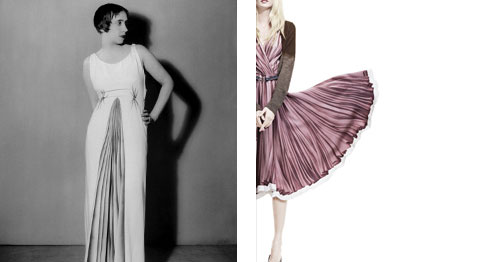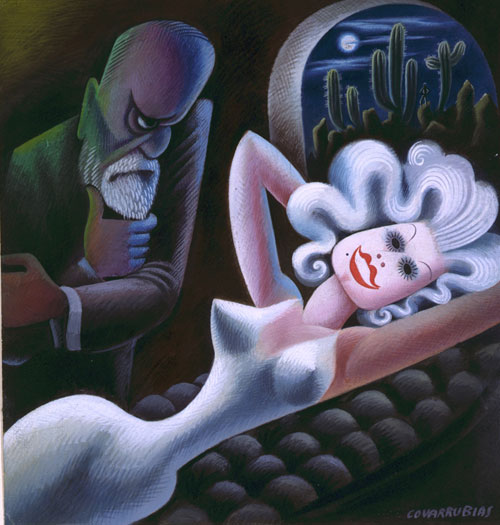Fashion has been described as a type of visual communication. It is the topic of Malcolm Barnard’s Fashion as Communication and Alison Lurie’s The Language of Clothes. Malcolm’s book is scholarly in nature, focusing on fashion theory, while Alison’s book describes fashion as a language with its own distinctive grammar, syntax and vocabulary. In a 1999 lecture at Cornell, Alison said fashion is “The oldest and most universal language.” Some might argue with this assertion, claiming that the languages of music and love are quintessentially universal, but fashion has a place as a means of communication. We communicate who we are by the clothes we wear and the fashions we choose to buy.
A different type of communication is on display at the Metropolitan Museum of Art exhibition “Schiaparelli & Prada: Impossible Conversations.” The exhibition, organized into seven categories, explores communications that might have happened (but didn’t) between two Italian fashion designers from different eras: Elsa Schiaparelli and Miuccia Prada. Imaginary conversations between the designers are captured on film by director Baz Lurhmann, with actress Judy Davis playing the part of Elsa.
Both Elsa and Miuccia created revolutionary, modern fashion in their times, yet much of Elsa’s fashion looks classic and timeless today, with an exquisite focus on sculptural and architectural elements, while Miuccia’s work looks unabashedly modern. It’s important to take a step back and acknowledge that Elsa was a trailblazer in her own right in the early part of the 20th century.
Throughout history, the fashion industry has provided a way for ambitious, driven and creative women to achieve a life of means on their own terms. Surprisingly, neither Elsa nor Miuccia studied fashion design nor trained to be a seamstress as a young woman. Elsa studied philosophy at the University of Rome, while Miuccia has a PhD in political science from the University of Milan. Both women were well into their thirties by the time they decided to pursue a career in fashion. Coco Chanel is not mentioned in this exhibition, but it’s interesting to note that Elsa and Coco were great rivals in early part of the 20th century. Elsa closed her fashion house in 1954, around the same time as Coco resurfaced, ready to take up the mantle.
The Waist Up/Waist Down category in the exhibition compares and contrasts Elsa’s elaborately structured jackets (designed for the mostly seated Café Society) with Miuccia’s feminine and embellished skirts.
The Classical body category features draping and pleats evocative of Greek sculpture.
While it’s easy to see how Miuccia might have been influenced by Elsa’s earlier work, the two designers differ on whether fashion is art. Elsa, who collaborated with filmmaker Jean Cocteau and artist Salvador Dalí, firmly believed that fashion is art, while Miuccia most emphatically does not agree.
The 1930s era series “Impossible Interviews” in Vanity Fair, illustrated by Mexican caricaturist Miguel Covarrubias, served as inspiration for the Met’s “Impossible Conversations.” The people juxtaposed in the Vanity Fair series might have been able to interact physically, but would have been unlikely to do so since they moved in completely different circles. Capitalist John D. Rockefeller, Sr. is paired with Communist Leader Josef Stalin while Sigmund Freud is coupled with Jean Harlow. Interestingly, a 1936 “Impossible Interview” between Elsa and Josef Stalin is also included in the Met’s exhibit.
Categories: Communication, Culture, New York City






